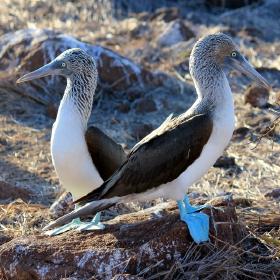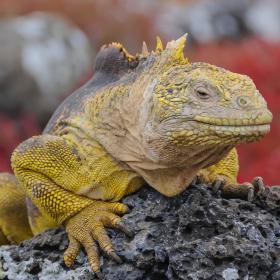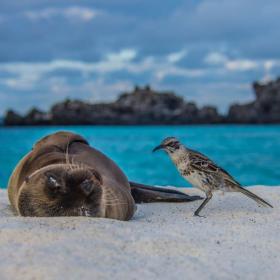The Galápagos Islands



When I was growing up, I bought a small comic book called Darwin for Beginners. It was an introduction to Darwin’s theories, as well as a surprisingly comprehensive survey of the reasons no one else had come up with the theory of evolution before he did. He’s one of those fascinating figures who stumbled upon one of the fundamental truths of the universe just before the world recognized it — Alfred Russel Wallace famously proposed the same theory just before Darwin published.
So I knew a fair amount about Darwin’s travels, and was excited to get a chance to visit Ecuador and see the Galápagos for myself. They’re difficult to visit; the Galápagos needs tourist dollars to pay for the preservation work that’s needed, while at the same time limiting the number of people tromping around the islands so as not to disturb the wildlife too badly. You’re basically required to book on one of the small cruise ships that sail in and around the island, staying on board and only docking for short periods of time to see the flora and fauna.
I got a chance on the same trip to visit the Amazon rainforest, and discovered my conception of the rainforest and the Galápagos islands were basically backwards. You hear all these things about the massive biodiversity in the Amazon, and that’s certainly true, but what that means is for any given acre in the forest there are one or two representatives of hundreds of different species. And they’re generally hiding. You’ll see flashes of birds, or monkeys, or butterflies — all different, none immediately apparent while you’re standing there.
That’s not the Galápagos. The Galápagos are these rocky, shrubby, inhospitable outcroppings in the middle of the Pacific Ocean. But they’re absolutely teeming with colonies of animals. There are blue-footed boobies by the dozens swarming around the boats, diving just past the railings at the fish alongside; or hundreds of marine iguanas out sunning themselves on the rocks, sneezing clouds of salt; or massive gangs of sea lions lounging on the beach, generally pretty bored.
It changed my understanding of life, of what an ecosystem looks like, at the way evolution shapes the world we live in and the creatures we share it with. What the Galápagos provided Darwin was an example of what isolated environments and natural selection do to populations — in the absence of competing pressures, animals are going to evolve to exploit a niche and take up every available inch of space in it.
And after having this insight so plainly demonstrated, I got back on a boat and returned to the mainland and wandered into a teeming crowd of people at the airport and thought oh, right, we’re not immune. As above, so below.